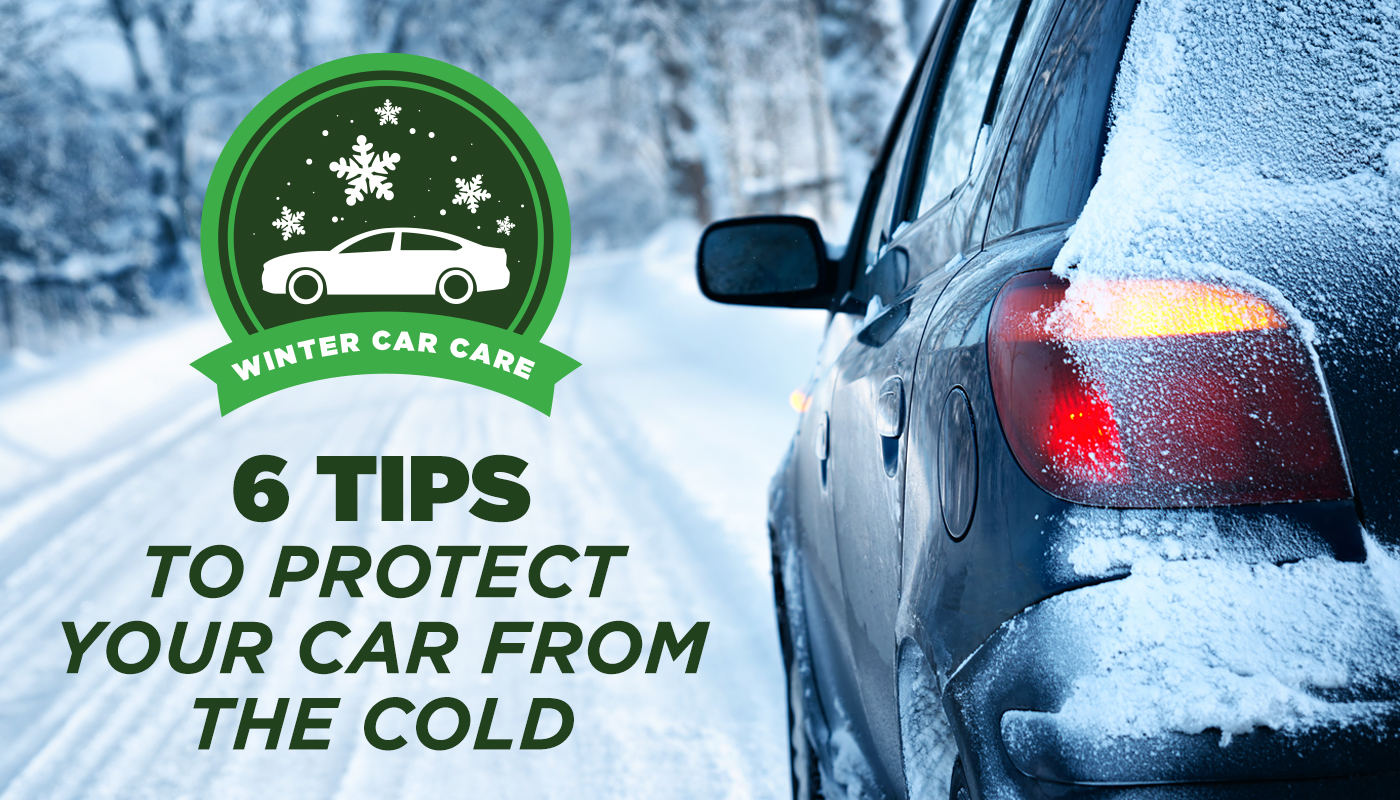Winter Car Care: 6 Tips to Protect Your Car from the Cold
Posted By: Greg T. | Date Posted: Dec 03, 2019

Low temperatures and harsh weather during the winter can damage your vehicle or make it less safe for you to drive. Follow our tips to protect your car from the cold and keep driving smoothly for safe holiday travels.
1. Check Your Tire Pressure Often
It always seems to happen right when you’re leaving for work on a chilly morning that your tire-pressure light clicks on to warn you that your tires are underinflated. When temperatures fall, so does the air pressure in your tires.
Make sure to properly add air to your tires whenever they are underinflated, so they are even and at the correct PSI. In newer vehicles, the recommended tire pressure is usually listed on a sticker inside your driver’s side door. If this information isn’t available here, the correct PSI for your tires can be found in your owner’s manual.
If you make a habit of checking your tire pressure regularly during the winter, you can prevent driving on underinflated or uneven tires. When your tires are underinflated, they wear down faster and can even lose traction when the roads are slippery with rain or ice.
2. Make Sure Your Battery is in Good Shape
Cold temperatures reduce your battery’s cranking power and people find themselves unable to start their cars more often on cold winter mornings. The last thing you want is to have to call someone to jump your car off on a frosty day before your commute to work.
If your battery seems like it’s taking longer to crank as the temperature starts to drop, or if you’ve already had issues with your car not starting, take your vehicle to a professional to have the battery tested. Your local service station should be able to test the battery to see if it needs to be charged or if it needs to be completely replaced.
Car batteries typically last about 5 years and should be tested and replaced once they start to show signs of wear.
Be prepared for emergencies by keeping a pair of jumper cables in your car just in case they’re needed.
3. Improve Visibility with Your Windows & Lights
Never drive your vehicle if you can’t see properly out of the windows. Driving with decreased visibility is dangerous for you and everyone around you on the road.
If there is ice on your windows, remove it with a scraper, and avoid the temptation to use your windshield wipers. Make sure your heater is working properly as well so you can defrost your windows with warm air.
If you find your windows are fogging up because of the heater, try running the air conditioner with the temperature set to a comfortable level to dehumidify the air.
Ensure that people can see you on the road as well by checking that all of your vehicle’s lights are working properly and are clean. Make sure your lights are on at night and when weather conditions demand it, such as when there is rain, snow, or fog.
4. Check Your Fluids
It’s important to make sure your vehicle is filled with the proper fluids at any point during the year. Get regular oil changes and have your service center check and fill other fluids such as coolant and washer fluid.
You should check your fluids regularly especially throughout the winter. Making sure your coolant isn’t low will help you avoid issues with your engine because of freezing temperatures and can also help you pinpoint if you have any leaks. Keeping your gas tank and your washer fluid full will also keep you safer on the road to prevent you from running out of gas on long trips in the cold or being unable to clean debris from your windshield.
5. Take Care of Your Windshield Wipers
If you notice streaks while you use your windshield wipers or decreased visibility during rain or snow, have your wiper blades replaced when you take your car in for service. Many professionals recommend that you replace windshield wiper blades twice a year.
If you park outside for work or at home, protect your windshield wipers by leaving them raised to prevent them from freezing to the glass. Again, if there is ice or snow on your windshield, use a scraper to remove it rather than your wipers.
6. Take Extra Precaution Against Snow and Ice
If you live in an area that experiences freezing temperatures and snow often, take extra precautions to protect your vehicle and yourself during the coldest months of the year.
Once winter begins, it’s a good idea to swap out your regular tires for winter tires to give you better traction and more safety on slick roads. Most professionals advise that winter tires should be used for any areas where the temperature regularly drops below 45 degrees.
